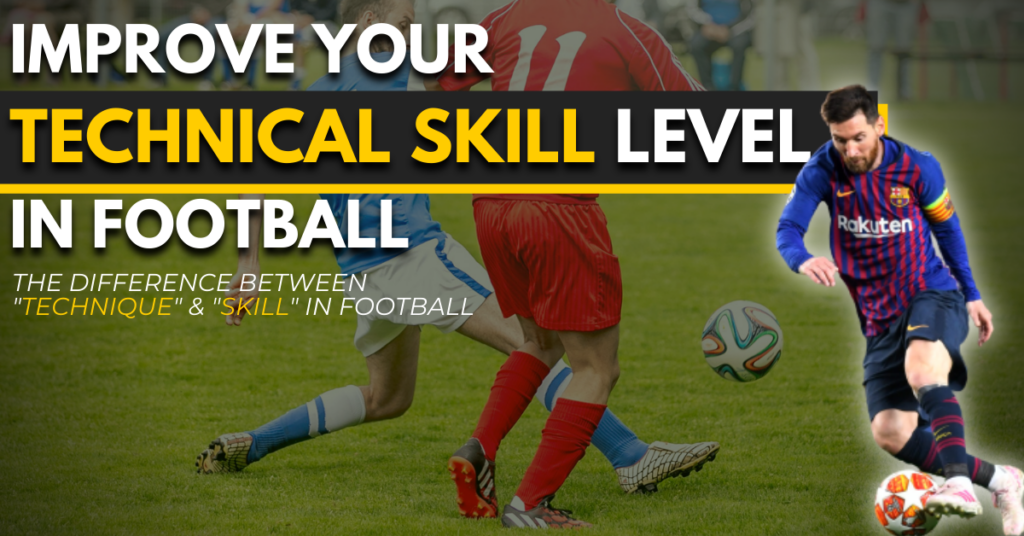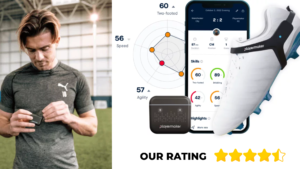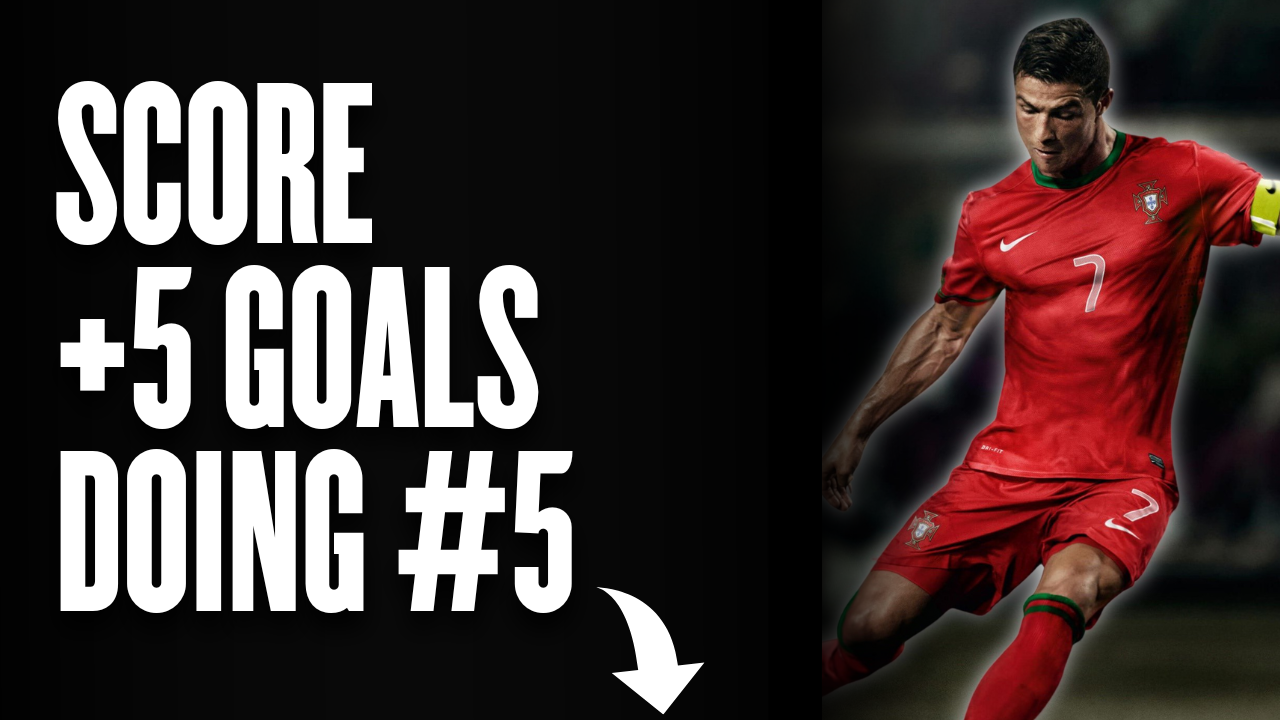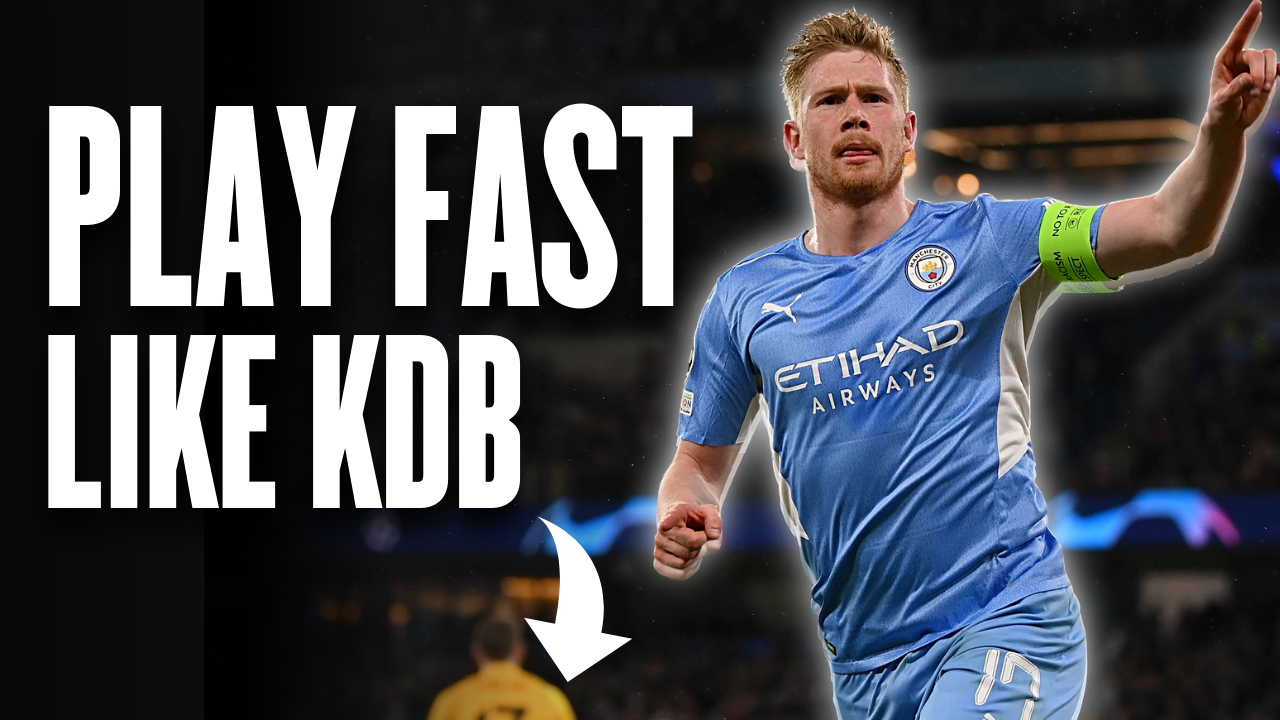
Many people in the world of football use the terms “technique” and “skill” just as if they were the same thing.
They aren’t.
Football technique and skill are two different aspects of performance and player development that are deeply correlated with each other and require individualized attention during the development process.
What Is Football Technique?
Technique in football, and sports in general, is an intentional and effective sequence of movements in their most basic and simple form, either with or without the ball. Put simply, technique is just a physical task.
Football consists of various technical components, some of which are performed with a ball and some without one, some are performed with the players’ feet while others are performed with other parts of the players’ body (except his/her arms).
Training that focuses on technique is especially important in the early stages of an athletes’ football career. The earlier the fundamental technical components of the game are engrained in one’s football repertoire, the more potential there is available for further development and skill mastery.
Here is a list of the fundamental technical aspects of football (performed with the ball):
- Passing
- First Touch
- Ball Control
- Dribbling
- Shooting
- Heading
- Tackling
What Is Technical Skill In Football?
Technical Skill in football, and sports in general, is an intentional and effective sequence of movements used to solve (a) specific problem(s) in the constantly changing/chaotic environment of football (i.e. performing a one-touch pass to break the gegenpressing/offensive press). In other words, skill is a physical task, either with or without the ball, in the context of a game in an attempt to solve game-specific problems.
Skill involves various performance parameters, some of which are controllable (internal) and some uncontrollable (external).
For example, it requires skill in order for players to engage their cognitive skills in combination with their technique on the ball (internal) in order to recognize that the opposition is applying gegenpressing (offensive pressure) and to actually make a decision that is going to be fast but also effective.
Skill involves time, space, cognition, emotions, etc. but most importantly, technique!
What Is The Difference Between Skill & Technique In Football?
The difference between technique and skill in football is simple; technique is the foundation of skill, yet skill is the aspect of the game that dictates your level of performance on the pitch.

*As an affiliate, I'm earning from qualifying purchases without any extra charges being placed on you.
So, technique emphasizes the quality of the movement performed in a stable environment (i.e. on-ground, linear pass from Player to Player B) whereas football skill relies on a series of qualities and conditions (internal and external) in order to solve a complex, football-specific problem (i.e. recognition of tight space and high pressure – taking the first touch with such a good level of skill that eliminates one opponent from the play and gives you space to score a goal).
Examples Of “Skill” VS “Technique”
While both you and Marcelo might be able to fluidly get the ball down to the ground after kicking the ball 5m up in the air (technical aspect), Marcelo possesses a greater level of technical skill.
This increased level of technical skill enables him to use the technical aspect of the game (first touch) in much more complex game scenarios and solve them with more quality/successfully.
Another example I’d like to share with you is this;
Some use an axe to open a can of beans, some use a can opener. These are two techniques.
To open a can of beans with an axe, and not spill the beans takes skill. It does not take much skill to open a can of beans with a can opener without spilling.
Mastery of technique is skill. Technique alone is not.
You can now understand that skill is a much more demanding and refined version of technique. Technical skill is what truly separates the bad from the good, and the great from the G.O.A.T.
Technical skill might not be the end-all-be-all answer to elite football performance, but it definitely is a really, REALLY big piece of the puzzle. A “must-have” I’d say.
The Skill Acquisition Process In Football
Remember what we said above? Technique is the foundation of skill.

*As an affiliate, I'm earning from qualifying purchases without any extra charges being placed on you.
With this basic principle in mind, we can start our discussion around technical development and skill acquisition, which is split into three stages (skill acquisition stages);
- Cognitive Stage
- Associative Stage
- Autonomous Stage
Cognitive Stage
The first phase of the skill acquisition process starts with the footballer engraining a basic motor pattern (the technical aspect of performance) into his/her neuromuscular system and creating the so-called motor engrams (memorized motor pattern used to perform a movement). This stage is fundamental in the skill-acquisition process and can’t be finalized without it.
In this phase, footballers gain awareness of the motor pattern they are trying to learn and develop. Coaches should provide players with technical cues, guidance, freedom, opportunities to fail (trial & error), and ask them questions that are going to lead them to a deeper learning experience.
Despite the inconsistency in this phase, players should be encouraged and helped to keep practicing. Slowing down the movement can really help players grasp the technical side of things and engrain a proper movement pattern/engram. This will act as a strong base later on in the skill-acquisition process.
Associative Stage
In the associative stage, the footballer has achieved a greater level of technical quality but also consistency. The athlete has been familiarized with the movement pattern and is now ready and willing to increase the complexity of the development process by adding more complex training stimuli that may challenge the athlete on a whole new level (cognitive, tactic, physical, etc.).
This is the stage where players start using technique to solve game-specific problems. The intensity and difficulty remain low to moderate and progressively increase. Players start getting familiarized with the “skill” aspect of performance.
Autonomous Stage
The third and last stage of the skill acquisition process is the autonomous stage. In this stage, the athlete is able to execute the motor pattern learned automatically, with little to no conscious effort. This automation enables the footballer to react to the different stimuli that are present within a 90-minute game with fast and precise actions. Skill mastery is what separates players of various playing levels.
Overview
During this 3-stage process, we’re basically moving from conscious to unconscious efforts. We go from basic to more complex and game-specific. We help the player transition from a closed, stable, predictable, and structured training environment to the chaotic environment met inside a 90-minute game.
The Core Aspects Of Technical Skill In Football
There are certain factors that are present in your ability to execute a technical aspect of the game with skill. When trying to develop a football skill, you need to consider all of these factors and find ways to implement/use these to your own advantage.
Here are 5 of the factors that play a vital role in motor-skill acquisition according to Hirtz:
- Kinaesthetic differentiation – your ability to perceive and control the strength/power, timing, and spatial parameters of the ROM (Range of Motion) of a certain movement
- Space-Time orientation – your ability to perceive and process information from your surroundings to coordinate and guide your movements in space
- Balance – your ability to stay balanced or regain your balance in a constantly changing game environment or solving complex problems in unstable game scenarios
- Complex reactionary ability – your ability to execute a certain movement in a given moment and with a specific timeframe in reaction to one or more stimuli you receive during a game
- Rhythm – your ability to time complex, multi-joint movements in an efficient manner
Skill = Technique (Fundamental) + Kinaesthetic Differentiation + Space-Time Orientation + Balance + Reactions + Rhythm
(*This is not a scientifically proven equation*)
Yes. Skill is complex.
You see, football and its beauty are all about skill. Skill is one of the main reasons you are not Messi, Ronaldo, or Kante.
Players of this level (world-class) have to deal with much more complex game scenarios in comparison to lower-tier players. On top of that, they also have to find applicable and effective solutions in order to sustain their spot and excel at the elite level.
The good news is that you can take control of the situation and #levelUP your technical skill level.
Converting Football Technique Into Skill
Here are 5 tips you can implement in your training to develop technical skill in football/soccer;
1. Slow down the pace of your technical drills
The slow pace of a drill will allow you to focus on the quality of each repetition and really take control of all the kinaesthetic elements of the action (approach angle, arm movement, contact area, planting the opposite foot, following through, etc.). This will in turn lead to technical mastery and more consistent motor patterns.
2. Use visual and verbal stimuli to add reactive components to your drills
The football game is chaotic and unpredictable in nature. By including certain reactive stimuli at training, you can get closer to the game. At the end of the day, it all comes down to the perception-action coupling principle. Perceive information around you, process it, and act upon it with proper timing and quality of action.
3. Use SSGs (Small-Sided Games) as a transition into game-specific use of the skill that is under development
This increase in pressure and reduction of available space/time will force you to think and execute at a faster pace. Although this isn’t skill-specific training, it really offers a complex training stimulus you can’t find in individual drills. You’re basically required to solve game-specific problems by applying the technical skills you’ve acquired.
4. Adjust the angles, distances, and shapes of your drills based on the most common game scenarios you come across in your position
This is a really nice way to practice the technical aspect of performance in a structured manner but with game-specific actions. Study your position and analyze the most common actions you take with every skill of the game in-depth. Then, come up with patterns that you can use in your individual or team training to simulate game actions in a controlled environment (training.)
5. Use limitations to force a faster decision-making process
No matter what technical skill you are trying to develop, limitations (i.e. touch limitations) can be used as a coaching method to a) cut off a “bad” habit and b) force a faster decision-making process. Essentially, limitations increase the complexity of a training drill. They demand players to act with quality in disadvantageous scenarios.
Final Thoughts
Technique and skill might be two different things but they’re closely bonded to each other.
Without technical mastery, you can’t acquire a skill. Without skill acquisition, you cannot develop yourself from an amateur to a world-class level football player.
Slow down the process and don’t rush things. Master the technical elements of a motor pattern and slowly add various training stimuli that increase the complexity and challenge you.
The training stimuli you can add, change, and adjust depending on your specific needs can be:
- Cognitive (visual/verbal cues)
- Technical (coupling one game skill with another, i.e. dribble to pass)
- Tactical (i.e. using SSGs to focus on the build-up play of the back-line as a sub-team)
- Space (increase or decrease the space of the drill)
- Time (increase or decrease duration of the drill to emphasize skill quality vs skill consistency)
- Touches (place touch limitations to force faster perception-action)
- Angles/Distance/Patterns (change/adjust these to get more position-specific)
Working hard is great. Working SMART is genius.
Fast forward your progress and achieve a higher quality of results by training SMART.
RELATED ARTICLES THAT MAY INTEREST YOU
- 9 Ways To Become A Smart Footballer | (World-Class Level)
- This Is How To Improve Your Reactions In Football
- Improve Your Speed Of Play In Football/Soccer
- 5 Ways To Completely Mislead & Fool Your Opponent




